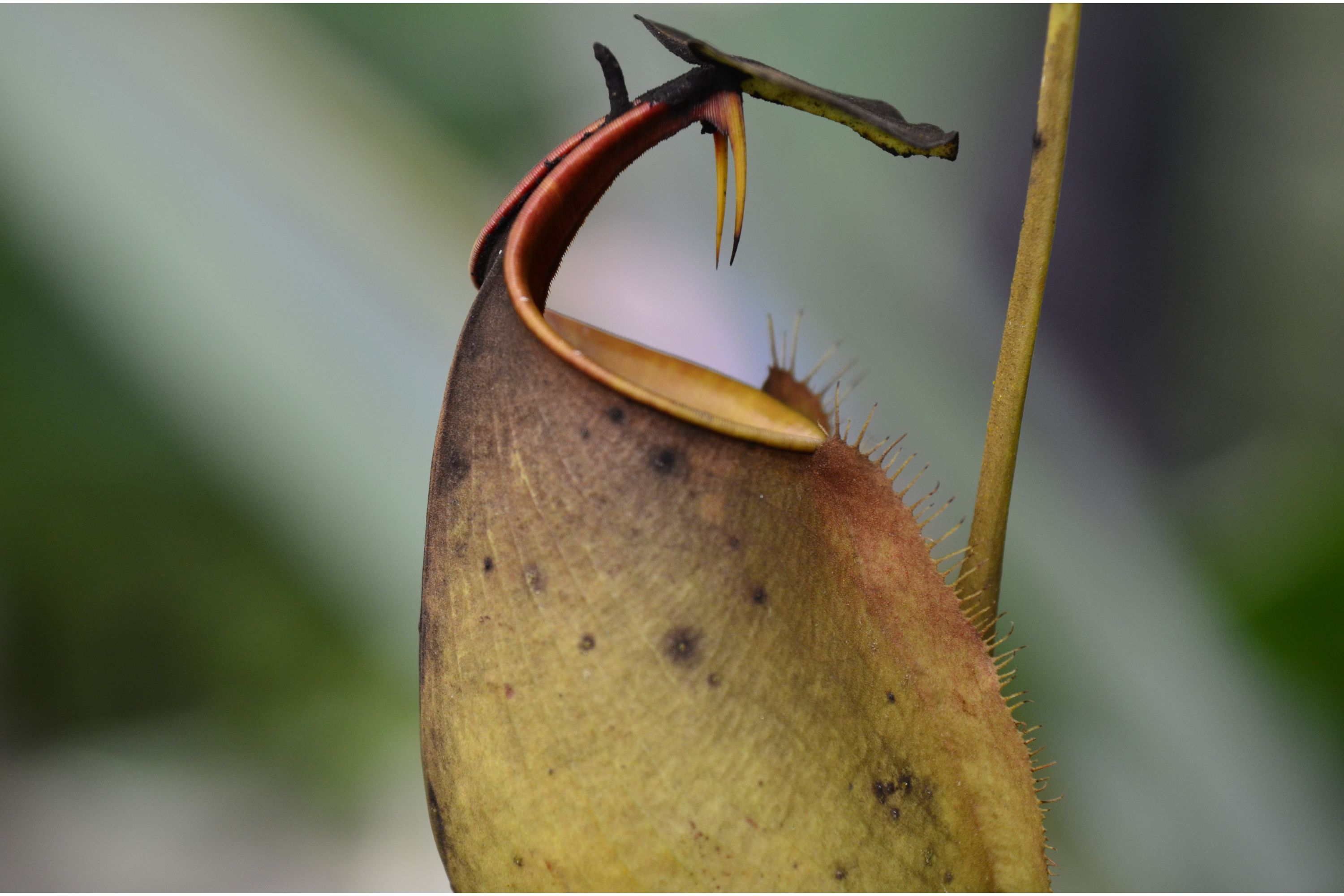Fanged pitcher-plant
(Nepenthes bicalcarata)

Description
Nepenthes bicalcarata (from Latin for "two-spurred"), also known as the fanged pitcher-plant, is a tropical pitcher plant endemic to northwestern Borneo, Indonesia. It is a myrmecophyte noted for its mutualistic association with a species of ant, Camponotus schmitzi. As an ant-fed plant it lacks many of the features that characterise the carnivorous syndrome in Nepenthes, including viscoelastic and highly acidic pitcher fluid, the waxy zone of the pitcher interior, and possibly even functional digestive enzymes. Nepenthes bicalcarata plants are the largest in the genus, climbing up to 20 m into the forest canopy. The cylindrical stem is thicker than that of any other Nepenthes species, measuring up to 3.5 cm in diameter. Internodes are up to 40 cm long.The leaves of N. bicalcarata are petiolate and coriaceous in texture. The lamina is obovate-lanceolate in form and also reaches huge dimensions, growing to 80 cm in length and 12 cm in width. It is slightly decurrent on the stem, forming two narrow wings. The lamina has indistinct longitudinal veins and numerous pennate veins. Tendrils may be up to 60 cm long and 8 mm wide. They are hollow and swollen near the pitcher.
Taxonomic tree:







